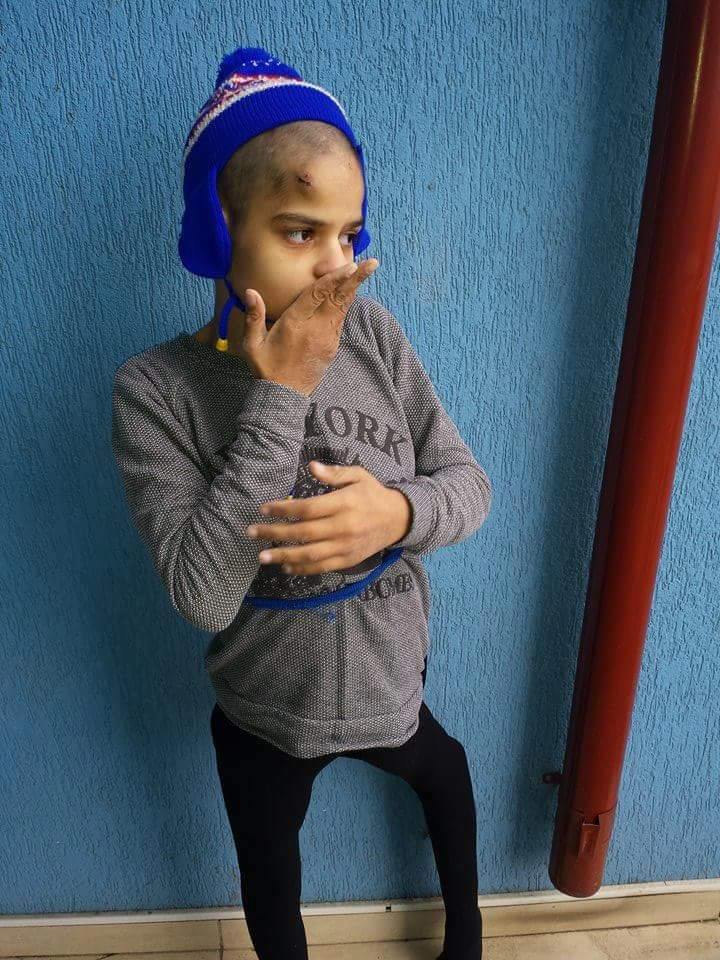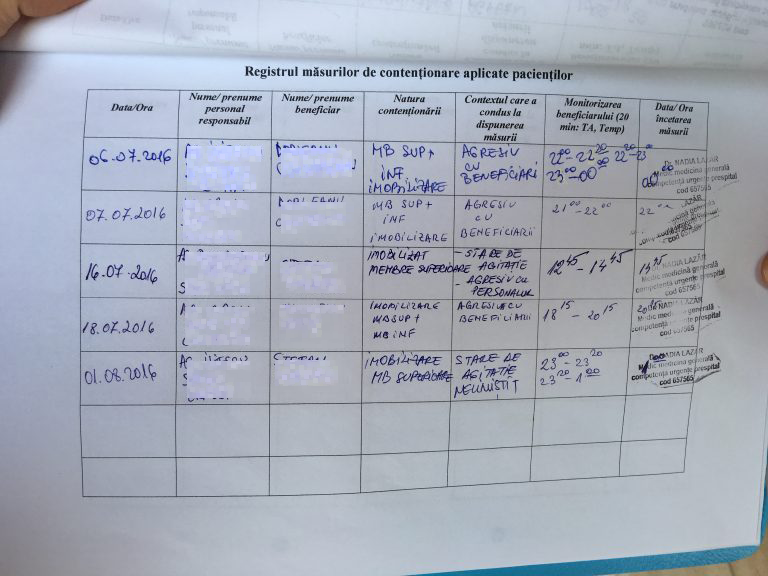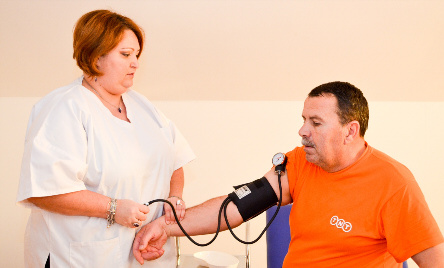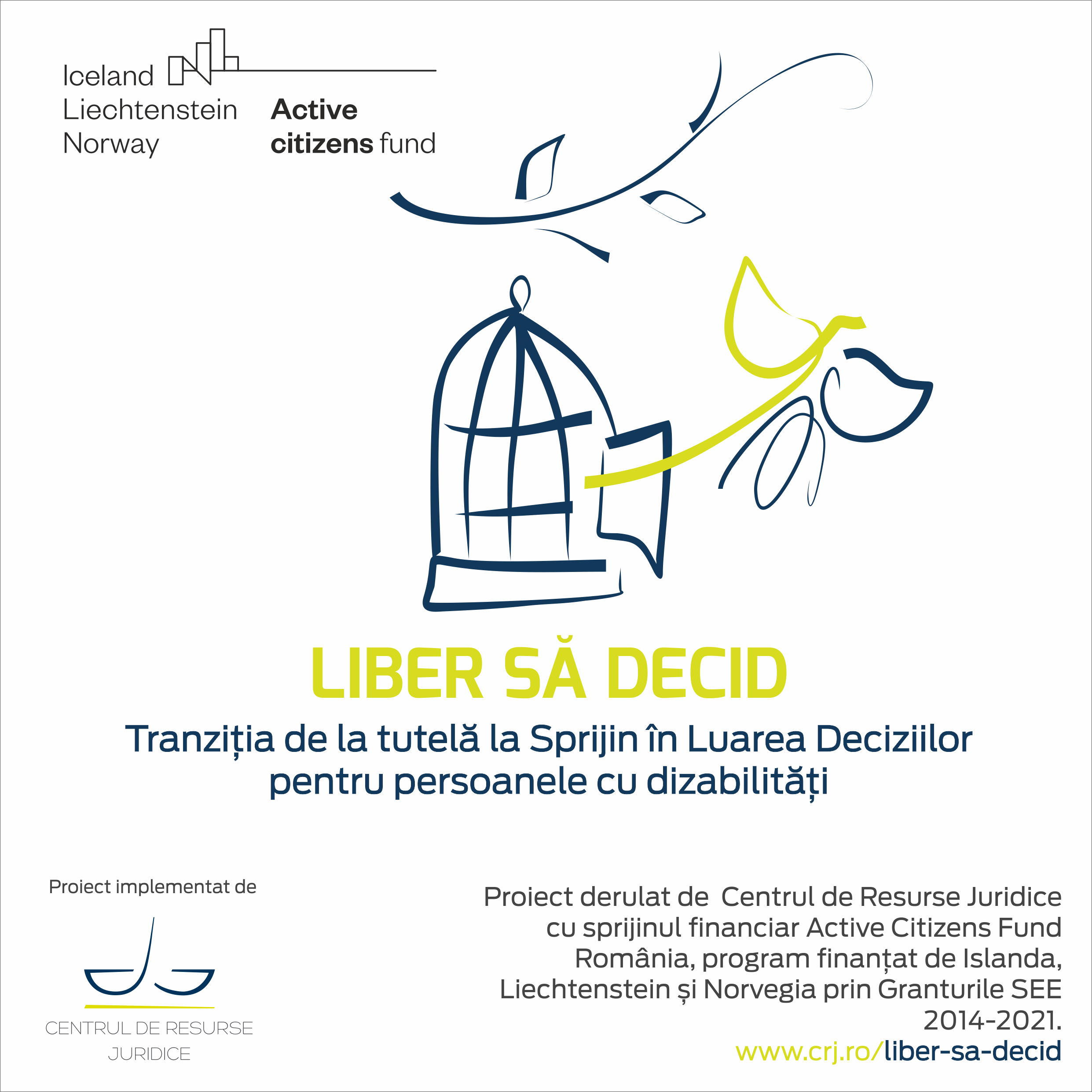
On August 2nd, 2016 CLJ’s monitoring team visited the center for young adults with disabilities Endemedica in Bragadiru, alongside the National Authority for Persons with Disabilities (ANPD) and the Center for Media Investigations. The object of this visit was to observe the way in which human rights are respected at this center. CLJ has submitted complaints to the competent authorities.
More on the case of Vasilica Constantinan more details on the regulation visit of August 2nd, 2016 can be read in the article below, signed by Ovidiu Vanghele and taken of www.investigatiimedia.ro
We want to remind you that in 2014 ECHR held Romania accountable in the CLJ case on behalf of Valentin Campeanu against Romania. In less than two years from this ECHR victory, we find that Valentin’s death was dust in the wind for the Romanian state, and that one more person with disabilities falls victim to the same faith.
Vasilica Constantin was born in 1989. She had been abandoned at birth and lived her entire life in the Romanian system dedicated to the protection of persons with disabilities. This particular protection system brought her aHIV infection, a chronic infantile encephalopathy diagnostic; this is where she developed severe psychomotor retardation, and by the care of this protection system she ended up in prison camp Endemedica in Bragadiru, called “Center for the Protection and Assistance of Adults with Disabilities”. After less than two years spent here, Vasilica died. On Children’s Day in 2016, when she was 27 years old.
She weighed 34 kilograms.
The Center for Media Investigation wrote at the end of last year about the Endemedica business, disguised under the name of “center for the protection and assistance for adults with disabilities.
A former paramedic, Teodor Lazăr, owner of a policlinic in Popești, near Bucharest, in 2014 transformed overnight a former old persons’ home into a center for the disabled. He had just received in his care multiple persons with mental disabilities through a contract signed by the former president of the National Authority for Persons with Disabilities (NAPD), Mihaela Ungureanu, who had been in function ranking as a state secretary until recently, including during the Cioloș Cabinet. Ungureanu was at the time the head of social assistance in Sector 3, Bucharest.
Teodor Lazăr and his wife, Nadia – General Practitioner, had stumbled into the domain of disabled care before: their policlinic ensured the medical services for 30 beneficiaries in a similar center located in Breaza. The Center for Media Investigations discovered and penal denounced the fact that six out of the 30 beneficiaries here died in suspicious conditions and that five out of six death certificates were falsely filled in.
Today at the Endemedica center in Bragadiru, located on str. Speranței (N.B. Hope St), there are 41 adults, the most of which young adults. They all have mental disabilities, some severe, and some of them have associated physical disabilities.
On August 2nd, 2016, CLJ’s monitoring team alongside the new president of the National Authority for Persons with Disabilities, Mihai Tomescu, went on a spot check at the Endemedica Holding 4 Life Association center in Bragadiru. Access inside the center was possible only after the owner Teodor Lazăr was announced about the visit. He first tried to block the visit by telling the employees to not let anyone in before he arrives at the spot.
The CLJ monitors managed to enter the center and found the employees hasting to put mattresses and bed coverings on the beds of the patients. During this time, the patients were outside in the two hundred to three hundred square meter yard of the center house located close to the road in Bragadiru, on the way to Alexandria.
“There is an indescribable filth here and a foul smell. The upstairs is too hot to stand, they were just putting in the sheets”, claims Florentina Cârtej, one of the CLJ monitors, after she finished the first tour of the center.
“Upstairs there is a permanently locked bathroom; there are the mattresses, the bed sheets. This is the procedure: when there is an inspection by someone they do not know, the employees call the owner, tell him about it and while this is happening, they take out the mattresses and the bed sheets and they put them on the beds so that it looks like everything is ok. Usually they do not have mattresses and bed sheets”, one of the employees of the center told us.
People tied up so they would behave
The owner Lazăr arrived after approximately 20 minutes and the discussion continued in his office. The activists and the authorities found out from the owner that, when the situation begs it, the patients are restrained as per telephonic indication of his wife, the general practitioner. The restraining log book showed that the evening before, one person had been tied up. Asked if his wife had been in the center at that hour, the owner replied that the indication to restrain was given through the telephone.
“Yes, it is true that my wife keeps her GP stamp here and the employees use it when she tells them to if she is not in the center. It just so happens for her to not be here so then we do this”, Teodor Lazăr explained to us specifying that he sees nothing wrong in this procedure. “Anyway my life comes here the next day and signs it”, he added.

Photo via Centrul de Investigații Media
Lazăr was asked whom, why and how the patients are tied up when this is needed. He took out scotch tape and tried to illustrate it on one of the patients, Constantin, who was standing in the office with the teams from CLJ NAPD.
Although their log book has columns dedicated to checking the vital signs (pulse, blood pressure) of the patients, these are never checked, and the document only marks the periods during which the patients are tied up, as you can see in the photo of the document.
Remote Medicine
The owner’s wife, Nadia Lazăr, is the general practitioner to the 41 patients from the center. She was also Vasilica Constantin’s GP, namely the person who took care of her during the two years she spent in the center. Nadia was supposed to take care of the health evolution of Vasilica Constantin, to make sure she receives the proper medication and food considering she was HIV positive. Vasilica died on June 1st. Neither Teodor, nor Nadia were at the center. One of the employees called an ambulance, which came just in time for the paramedics to discover that the girl no longer had any vital signs.
„They asked us if we have anyone who can issue a death certificate. We called the owner and he said the GP – his wife – will do it and that there is no need for forensic expertise. The ambulance left and the death certificate was drafted by GP Lazăr, who didn’t even get to see Vasilica. The second day she was buried”, one of the employees of the center told us, but asked to not be named.
His words are confirmed by a second person, a former employee of the private social institution.
Teodor Lazăr however claims something different. „We called the Police, they came and told us the circumstances of death are not suspicious and there is no need for a forensic doctor”, the owner claimed, yet he couldn’t show the NAPD the official report or any other document to prove that he had called the Police or that the officers in Bragadiru came and took any decision about Vasilica’s death.
The medical documents attached to Vasilica Constantin’s file do not reflect in any way the degradation of her health condition. This is what the NAPD doctors, who studied her medical file, claim. The last reference to her health condition is a mention from February 2016, almost four months before she died: the young woman was 27 years old and weighed 34 kilograms.
Nobody will ever know why Vasilica Constantin got in this state and shortly was put six feet under.
Frivolous Social Assistance
“The restraining log book was filled in frivolously, the people here are tied up much more often and for longer periods. They are tied up with scotch tape, cut up t-shirt strips, rope, and shoelaces, anything that can be used to tie someone up”, a former employee of the center told us.
He had left Endemedica Bragadiru because he could “no longer stand the filth and the inhumane treatment to which these people were subjected.”
“We can’t even talk about hygiene, it cannot be about that. I have seen how they washed them: a mockery. The owner bought shower gel by the bulk and they were washed their hair and bodies scantily. They would come out almost as dirty as they went it; it’s normal that it smells so foul there, it’s normal that people would get scabies”, he continued.
The Center for Media Investigations, in its first investigation on Endemedica Bragadiru, wrote about the fact that for many months there was a scabies epidemic. The owner admitted the episode, yet mentioned that it was far shorter and at the time suggested we take samples from the center to the laboratory for analysis to check if it was truly scabies as the staff suggested when they gave us surgical gloves to protect ourselves. Everything is happening because as the name suggests it – Endemedica Holding 4 Life Association – the Bragadiru is part of the Lazăr’s business. They own a policlinic in Popești Leordeni, operated by Endemedica SRL, and they have kept the retirement home which is up and running in Bragadiru, two blocks away from the center for persons with disabilities.
Under these circumstances, the three economic entities of the Lazărs have the same employees, the staff from the center for the disabled is also working at the policlinic (especially the specialized personnel), and also at the retirement home. On paper things seem fine however nobody can really check to what extent and how much time the center employees actually spend working with young adults with special needs.
In order to optimize the costs, the food for the retirement home is cooked at the center for the disabled, who only get a part of the food. “More than half of the food goes to the old people, from which some leftovers might come back for the ones at the center. Clothing and bed sheets are washed in the same lot as the ones from the retirement home, basically zero hygiene!” one CMI’s sources inside the center told us.
Bragadiru Center’s favorite activities: sedating and tying up
When asked what sort of activities the patients perform, the owner said “those who can do sports”, while the rest are in psychological counseling.
We visited the cabinet of the psychologist who was just finishing his last day at the job after he had resigned. The small office had no sort of furniture. According to the owner, the psychologist used to come here every day, however according to the employees, she only came three times per week.
“She would take a chair, similar to the children she worked with – that’s what we call them, the children – and they would go to the cabinet and talk”, owner Lazăr told the CLJ monitors in regards to the psychological counseling activity.
“Actually when she came, the psychologist didn’t do much with them, she would lock herself up in the office and would be filing papers or God-knows-what, she wouldn’t work with them”, one of the sources among the center employees contradicts Lazăr.
When asked about the number of employees of the center, Lazăr reported a collective of 25 persons. Including himself as a manager, although there is a head of the center, an engineer. His wife, who is presented online as the brains of the family policlinic in Popești Leordeni, is also listed as a medic at the center. The documents studied by the Center for Media Investigations, she has a monthly salary which exceeds 7.000 RON (~1600 Euro).
“At the center, there is an electrician hired, Mr. Lazăr’s cousin, who has never ever been there. Mr. Lazăr’s sister lives abroad, in Italy, yet she is listed as an employee in the center. I think she doesn’t even know where the center it”, one of the employees told CMI.
“This should be thoroughly checked, the matter of the employees. This is where everything starts, you know”, he continued.
At each of the three visits in the Bragadiru center by CMI reporters there were only four people at work: a security guard, two nurses, and a lady in the kitchen.
The Spot Check and Its Consequences
“I haven’t seen anything like this since 2005-2006”, said Clara Mitar, one of the CLJ monitors at the end of the visit. “It is worse than in some centers owned by the state”, said Georgiana Pascu, CLJ program manager and the leader of the monitoring teams in the organization.
The Center for Legal Resources has filed a complaint with the Ministry of Labour and Child Protective Services sector 3 (DGASPC) in regard to the information grasped at the Bragadiru center.
The center is currently under the accreditation process. The current law provides that such a center can function two years while awaiting authorization. This is only done on paper. The rest of the necessary documents are verified by the Social Inspection.
We filmed the center on August 2nd 2016.
Urgently called to the center by her husband on Tuesday evening, GP Nadia Lazăr came and said she would only talk to people who have at least the same medical training as her. She entered her office where she was awaited by Iolanda Dinu, member in the superior committee for the evaluation of degree of disability and an adviser to the NAPD president; she herself a medic.
Nadia Lazăr refused to give any details about the way in which the patients are treated. On departure she realized that none of the visitors had signed the access register. “If you haven’t signed, this visit practically never took place!” she told us in a threatening tone. She continued to threaten us with criminal complaints over criminal complaints, mentioning that she has also studied the law alongside the medical practice.
“Nothing will happen this time either, it’s just a flash in the pan just like you did in Breaza” – Nadia Lazăr was the one to sign the false death certificates uncovered by CMI in the investigation “Nobody’s Dead”. “I’m smart, nothing will happen to me!” the owner and GP Nadia Lazăr told us over the fence.

(GP Lazăr, at the Endemedica polyclinic in Popești Leordeni. Photo source: Endemedica SRL polyclinic website)
From the Care of the State to the Edge of the Cemetery
Vasilica Constantin lived and died in the care of the state because it is the state who entrusted her for a fortune to the Lazărs’ non-profit. A sum of 2 700 RON (~605 EURO) per month is what the Lazărs’ NGO received in order to take care of Vasilica. She was more expensive because she was HIV positive. For those without HIV, the state (Child Protective Services – DGASPC sector 3) pays the Lazărs with 1 800 RON (~403 Euro) per month. When Vasilica was alive, a simple calculation shows us that the Lazărs’ NGO received 82 800 RON (~18 575 EURO) monthly from the state.
The state wasn’t even capable of keeping a clear record of all the places where they kept passing off Vasilica Constantin. In her file from Bragadiru it only said she had been at “Casa Soarelui” and in some center in Vitan, after which she arrived at Bragadiru. At the inauguration of the “Casa Soarelui” center where Vasilica Constantin lived for a short while, the mayor of sector 3, Robert Negoiță himself, was present. He played with some balloons alongside the chief of sector 3 Social Assistance at the time, Mihaela Ungureanu, after which they left. Robert Negoiță to his complicated mayoral duties, while Mihaela Vasilica went back to her office where she signed the contract with the Lazărs’ NGO. Through this contract Vasilica and 40 other children were sent to Bragadiru.
Vasilica could not talk, she only made certain sounds. She would express her hunger the clearest: she signaled with her hands that she wanted to put something in her mouth.
She was taken to the grave by a priest, the cantor, and two center employees. GP Lazăr who signed her death certificate didn’t see her since she died till she was buried, neither in the last weeks when Vasilica was living; we were told by an employee who at the time was working for the Lazăr family. Nor did the Lazărs manage to attend her funeral. However the funeral was attended by Cristi, the owner of the funeral home where the Lazăr have been taking their business since they were partners in the death business in Breaza.
Neither one of Vasilica’s colleagues was taken to the funeral. They were first told she was at the hospital, then that she had been moved to another center.
Today at the edge of the Lehliu cemetery lays a small wooden cross with Vasilica Constantin’s name written on it. Alongside some papers written frivolously and signed from a distance, this cross bares the only witness to Vasilica’s plagued, short passing through this world. In the care of the state.
Author: Ovidiu Vanghele
Images: Center for Media Investigations, Center for Legal Resources, Agerpres (the photo from Casa Soarelui)
Video: Ovidiu Vanghele











